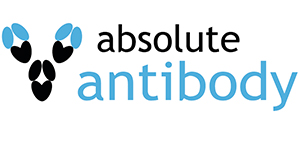Anti-EpCAM (3-17I)
Anti-EpCAM [3-17I], Recombinant, IgG2a kappa, Mouse
Artikelnummer
ABAAb02662-2.3
Verpackungseinheit
200 μg
Hersteller
Absolute Antibody
Verfügbarkeit:
wird geladen...
Preis wird geladen...
CloneID: 3-17I
Heavy Chain modification: Fc Silent™
Antigen Long Description: The original antibody was generated from a human naïve scFv phage display library and later on made into a human IgG1 isotype format.
Buffer Composition: PBS with 0.02% Proclin 300.
Available Custom Conjugation Options: AP, HRP, Fluorescein, APC, PE, Biotin Type A, Biotin Type B, Streptavidin, FluoroProbes 647H, Atto488, APC/Cy7, PE/Cy7
Uniprot Accession No.: P16422
Specificity Statement: This antibody binds human EpCAM. It also cross reacts with Cynomolgus monkey EpCAM.
Application Notes (Clone): The antibody specifically interacts with the natural EpCAM+Kato III cell line by flow cytometric analysis. The IgG format of the antibody bound to both human and cynomolgus EpCAM under non-reducing conditions in western blot analysis. In contrast, no binding of the antibody was observed to any reduced EpCAM antigen. Further, ELISA data demonstrated good binding of the scFv and IgG formats of the antibody to both human and cynomolgus EpCAM. The binding affinity of the IgG1 format to human and monkey EpCAM was measured by surface plasmon resonance (Kd= 1 nM and 0.93 nM, respectively). The ability of the IgG format of the antibody to induce ADCC was analyzed using three different breast cancer cell lines: MDA-MB-231, MDA-453, and BT-474. The results clearly demonstrated the antibody-induced ADCC in all three cell lines, MDA-MB-453, MDA-MB-231, and BT-474, in the presence of human PBMCs with respective estimated EC50 values of 0.08 ng/ml, 15 ng/ml, and 0.12 ng/ml. The maximum killings achieved were 75%, 92%, and 61%, respectively. The ability of the IgG version of the antibody to induce complement-dependent cytotoxicity (CDC) was analyzed using two cell lines, KATO III and MT-3. The results clearly demonstrated that the antibody-induced CDC in the cell lines KATO III and MT-3 in the presence of human serum (EC50 = 0.28 ng/ml and 0.38 ng/ml for KATO III and MT-3 cells, respectively) (US8637017B2). Immunohistochemistry studies of the reactivity of the IgG2A format of the antibody were performed on a panel of normal human tissues. The antibody showed a strong reaction to sloughed cells of the esophagus sample, colon, breast, and lung cancers with epithelial origin. The antibody was conjugated to Strepsaporin. PCI of 3–17I-saporin attenuated cellular viability in three different EpCAM-positive cancer cell lines (MCF7, BxPC-3, and WiDr) as measured by MTS assay. Further, PCI of 3–17I-saporin attenuated both the proliferation and colony-forming ability of EpCAM-positive MCF7 cells (Lund et al., 2014; PMID: 24525727).
Heavy Chain modification: Fc Silent™
Antigen Long Description: The original antibody was generated from a human naïve scFv phage display library and later on made into a human IgG1 isotype format.
Buffer Composition: PBS with 0.02% Proclin 300.
Available Custom Conjugation Options: AP, HRP, Fluorescein, APC, PE, Biotin Type A, Biotin Type B, Streptavidin, FluoroProbes 647H, Atto488, APC/Cy7, PE/Cy7
Uniprot Accession No.: P16422
Specificity Statement: This antibody binds human EpCAM. It also cross reacts with Cynomolgus monkey EpCAM.
Application Notes (Clone): The antibody specifically interacts with the natural EpCAM+Kato III cell line by flow cytometric analysis. The IgG format of the antibody bound to both human and cynomolgus EpCAM under non-reducing conditions in western blot analysis. In contrast, no binding of the antibody was observed to any reduced EpCAM antigen. Further, ELISA data demonstrated good binding of the scFv and IgG formats of the antibody to both human and cynomolgus EpCAM. The binding affinity of the IgG1 format to human and monkey EpCAM was measured by surface plasmon resonance (Kd= 1 nM and 0.93 nM, respectively). The ability of the IgG format of the antibody to induce ADCC was analyzed using three different breast cancer cell lines: MDA-MB-231, MDA-453, and BT-474. The results clearly demonstrated the antibody-induced ADCC in all three cell lines, MDA-MB-453, MDA-MB-231, and BT-474, in the presence of human PBMCs with respective estimated EC50 values of 0.08 ng/ml, 15 ng/ml, and 0.12 ng/ml. The maximum killings achieved were 75%, 92%, and 61%, respectively. The ability of the IgG version of the antibody to induce complement-dependent cytotoxicity (CDC) was analyzed using two cell lines, KATO III and MT-3. The results clearly demonstrated that the antibody-induced CDC in the cell lines KATO III and MT-3 in the presence of human serum (EC50 = 0.28 ng/ml and 0.38 ng/ml for KATO III and MT-3 cells, respectively) (US8637017B2). Immunohistochemistry studies of the reactivity of the IgG2A format of the antibody were performed on a panel of normal human tissues. The antibody showed a strong reaction to sloughed cells of the esophagus sample, colon, breast, and lung cancers with epithelial origin. The antibody was conjugated to Strepsaporin. PCI of 3–17I-saporin attenuated cellular viability in three different EpCAM-positive cancer cell lines (MCF7, BxPC-3, and WiDr) as measured by MTS assay. Further, PCI of 3–17I-saporin attenuated both the proliferation and colony-forming ability of EpCAM-positive MCF7 cells (Lund et al., 2014; PMID: 24525727).
| Artikelnummer | ABAAb02662-2.3 |
|---|---|
| Hersteller | Absolute Antibody |
| Hersteller Artikelnummer | Ab02662-2.3 |
| Verpackungseinheit | 200 μg |
| Mengeneinheit | STK |
| Reaktivität | Human, Cynomolgus Monkey (Primate) |
| Klonalität | Recombinant |
| Methode | ELISA, Flow Cytometry, Immunohistochemistry |
| Isotyp | IgG2a kappa |
| Wirt | Mouse |
| Produktinformation (PDF) | Download |
| MSDS (PDF) | Download |

 English
English







